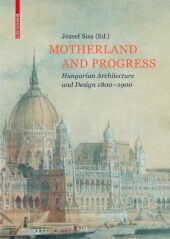 Neuerscheinungen 2016Stand: 2020-02-01 |
Schnellsuche
ISBN/Stichwort/Autor
|
Herderstraße 10
10625 Berlin
Tel.: 030 315 714 16
Fax 030 315 714 14
info@buchspektrum.de |

József Sisa
Motherland and Progress
Hungarian Architecture and Design 1800-1900
2016. 996 p. 767 col. ill. 240 mm
Verlag/Jahr: BIRKHÄUSER BERLIN 2016
ISBN: 3-03-561009-6 (3035610096)
Neue ISBN: 978-3-03-561009-3 (9783035610093)
Preis und Lieferzeit: Bitte klicken
Im 19. Jahrhundert erlebte Ungarn noch nie dagewesene soziale, wirtschaftliche und kulturelle Entwicklungen. Mit dem Österreichisch-Ungarischen Ausgleich von 1867 wurde das Land gleichberechtigter Partner in der Doppelmonarchie, Architektur und Kunst erlebten eine Blüte. Es entstand ein mitteleuropäischer Geschmack, in dem die künstlerische Präsenz der deutschsprachigen Länder um den Einfluss von Frankreich und England erweitert wurde. Im Laufe dieses Prozess´ wurde versucht zu einer dezidiert ungarischen Kunst zu finden, die sowohl Motiven bäuerlicher Kunst als auch realen (oder fiktiven) historischen Vorläufern entlehnt wurde. "Heimat und Fortschritt" - das Motto der ungarischen Reformer - spiegelt den Wunsch des Landes seine kulturelle Identität zu definieren und seine Zukunft zu formen.
In the 19th century Hungary witnessed unprecedented social, economic and cultural development. The country became an equal partner within the Dual Monarchy when the Austro-Hungarian Compromise of 1867 was concluded. Architecture and all forms of design flourished as never before. A distinctly Central European taste emerged, in which the artistic presence of the German-speaking lands was augmented by the influence of France and England. As this process unfolded, attempts were made to find a uniquely Hungarian form, based on motifs borrowed from peasant art as well as real (or fictitious) historical antecedents. "Motherland and Progress" - the motto of 19th-century Hungarian reformers - reflected the programme embraced by the country in its drive to define its identity and shape its future.
József Sisa, Institute of Art History, Hungarian Academy of Sciences, Budapest.


